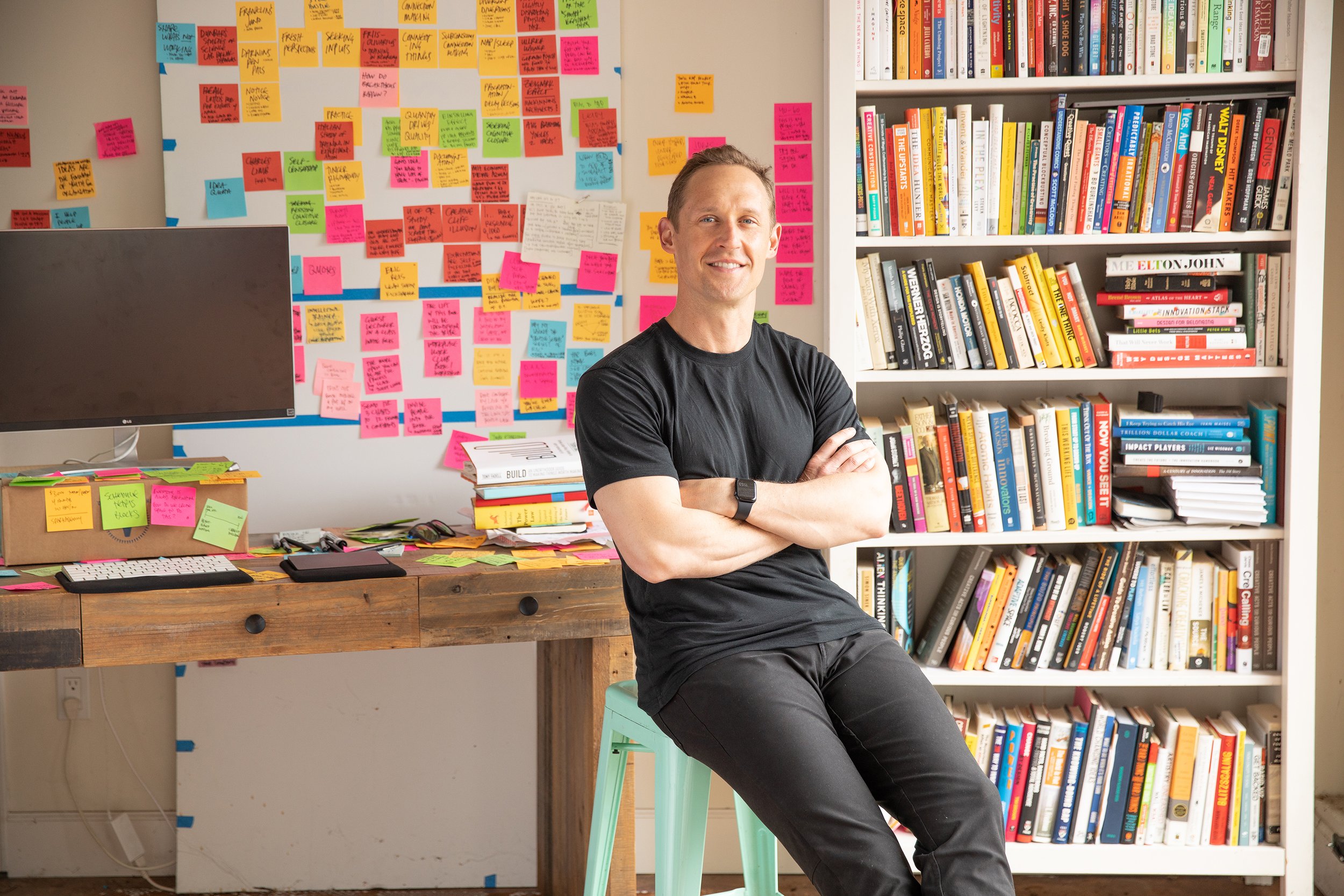
Methods of the Masters
A blog on the art & science of creative action.
Imitate Frank Lloyd Wright
Frank Lloyd Wright is one of the most celebrated architects of the twentieth century. You might be surprised to see the two routine habits that produced such breakthrough thinking.
Drive Innovation Through Care
Subconscious processing has tremendous potential to deliver breakthrough thinking. But you can only tap into that potential if you actually care about a problem. Design thinking and empathy are a great way to foster that critical precursor to innovation.
Put Learning to Use
It’s understandable that inputs fuel output. What’s much more surprising is that output-discipline actually reinforces the inputs we seek. When we use information, it cements it into our long term memory.
Renew The Founder’s Mindset
Founders have a sense for what the market wants, but have to be willing to adapt based on real-time feedback, and iterate accordingly. But sometimes, it’s hard to hear the market…
Set The Frame
Harvard Business School Professor Amy Edmondson says that framing a meeting — like the d.schools, “Flaring or focusing?” meeting-opener — helps teams do the work they need to do, in the way they need to do it.
Make Connections
The fundamental responsibility of the innovator is to make connections. But how does one do that? Here are a few starting suggestions.
Diagram Your Last Breakthrough
Most folks are the victims OF a breakthrough more often than they are the perpetrators. It doesn’t have to be that way. We can tempt lightning… Or at least, we can increase the odds of a strike.
Examine Resistance
If you want to avoid resistance, don’t suggest doing anything new. Almost every attempt to introduce innovation is met with resistance. By examining the surprising sources of resistance, we can learn how to frame innovation in a way that wins minds.
Flip The Script
Organizations inadvertently insulate us from the things that bother our customers. When we immerse ourselves in our own products and processes, we viscerally experience what needs to be reinvented.
Pick Up A Side-Project
Marcus Hollinger is a modern day renaissance man. While he’s got a steady gig as CMO of Reach Records, he also just started an incredible coffee company on the side. Far from sapping him of creative energy, the side-hustle fuels fresh thinking.
Request Options
Legendary Stanford professor Bob McKim had a simple, standard response to any student seeking his feedback on a new project: “Show Me Three.”
Make A Manifesto
Inspired by an assignment we give our graduate students, here I attempt to state my intent as a researcher and teacher. Your feedback is very much welcome.
Consider the Odds
Innovation is a numbers game. Knowing prior probabilities helps founders calibrate their efforts. Some simple math can improve your speed of learning dramatically.
Be Your First Customer
The company’s next product might be hiding in plain sight: where you’re already servicing your own needs. Thinking about yourself as the first customer among many, instead of the total addressable market, is a game-changer.
Embrace Constraints
If necessity, as they say, is the mother of invention, perhaps we could say that constraints are invention’s crazy uncle. Better not to fight them, and instead spring off of them into unexpected & truly differentiated directions.
Call A Time Out
Perhaps the greatest thing one can do to establish trust is to address the elephant in the room — “Is this person safe?” — head on, straight out of the gate. Inspired by Ise Lyfe.
Normalize Growth
Students mistakenly assume that, while they’re supposed to be learning, yet surely at some point — ostensibly, by the time you become a “successful teacher” — you don’t need to grow anymore. This is a shame, as it robs them of agency and power.
Map Your Mind
“You know that fantastic feeling you get after a great brainstorm? How do you get that on your own?” David Kelley, founder of IDEO and the Stanford d.school, gave me a lesson in pushing my own thinking. “Do a mind map. They’re the key to my creative success.”




















